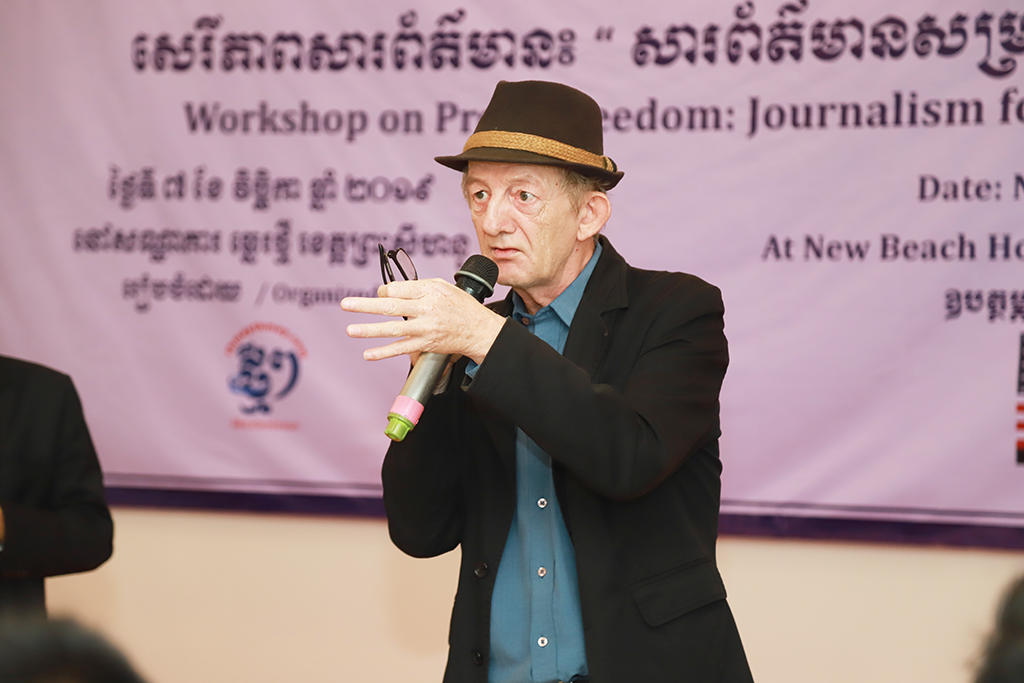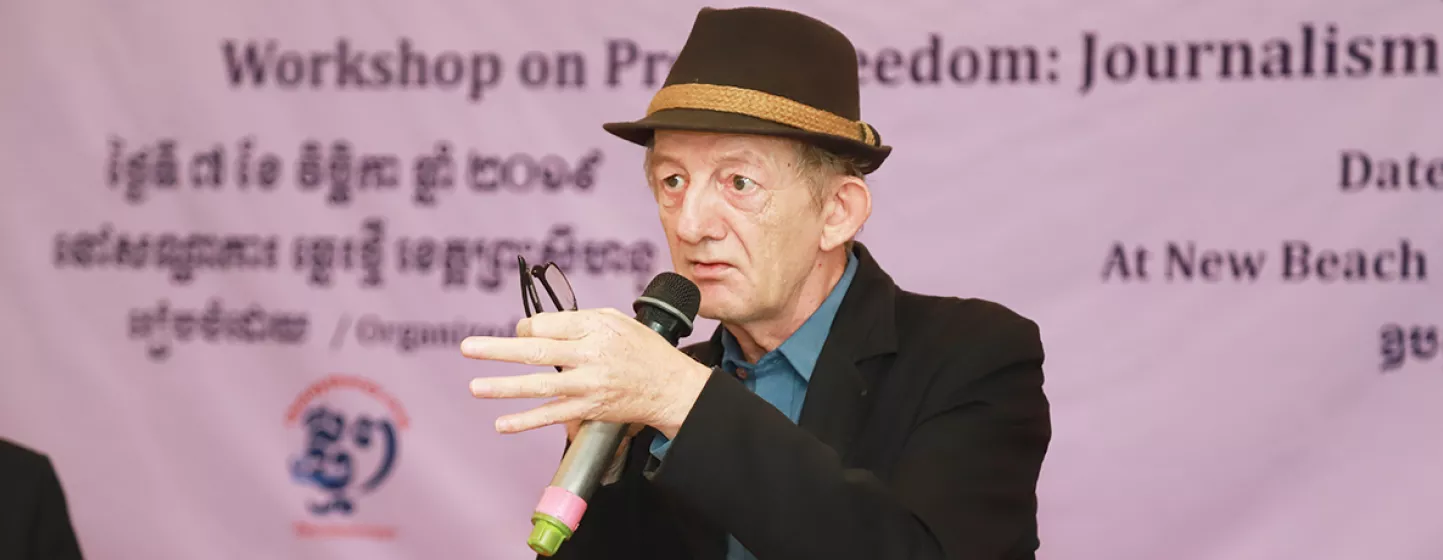Pierre Gillette, a trainer at heart
A leading local figure in journalism, Pierre Gillette, 65, has lived in Cambodia for over 30 years. Listened to and respected, he was chosen by CFI to train around 15 journalists in the “One Health”* approach, as part of the Media for One health project.
Gifted with the ability to blend in with his surroundings, Pierre Gillette, 65, has nevertheless “shaped Cambodia’s media landscape”, describes his long-standing colleague, Soklim Ky, 53, a journalist with Thmey Thmey, a Cambodian online newspaper (https://thmeythmey.com/). He even credits his colleague with training “hundreds and even thousands of Cambodian journalists, as well as being an excellent journalist and a good writer”. “In Cambodia, we struggle with numbers” laughs Pierre humbly.
He arrived in the country to join some French friends working as freelance journalists and set up home there in April 1994. “It was interesting to be there at that precise moment in the country’s history, after 30 years of war,” he says. In May 1995, the Franco-Khmer newspaper, Cambodge Soir, was created. A French newspaper that covers Cambodia, but not a newspaper for expatriates, with a mixed editorial staff. Pierre became editor-in-chief in August 1995 until the newspaper was discontinued in 2007. “The idea was to train a generation of journalists, through a training newspaper, to leave a mark”, explains Stéphanie Gée, a former journalist with Cambodge Soir who now works as a proofreader and translator for the Extraordinary Chambers in the Courts of Cambodia (ECCC), which tries those responsible for the crimes committed during the Khmer Rouge era.
Pierre originally studied history at the University of Caen (north-west France) in the late 1970s. He was an avid reader and experienced the “work it out for yourself” journalism process, but one day he opened the door of a campus radio association, Radio Kincaille, and found his calling.
"I love working collectively as a team"
Based in Phnom Penh, the capital of Cambodia, Pierre is now a valuable liaison for the Themy Thmey newspaper, with which he collaborates. A corporate communications adviser to a pharmaceutical laboratory (PPM - Pharma Product Manufacturing) and an agro-biology company (Confirel), he also writes biographies.
As a trainer for CFI (https://cfi.fr/fr/projet/des-medias-une-sante), he believes that “it is vital to inform Cambodians about health issues”. As editor-in-chief, “he has a natural authority, a vision and an idea of journalism that is passionate, with thought-provoking articles and no ready-made answers” says Stéphanie Gée. “Shy at first, but not without a sense of humour, he’s always accommodating” she continues. Pierre agrees, “I love working collectively as a team, without a hierarchy.”
What drives him most of all is “a need to ensure that trained journalists are recognised and respected as specialists, capable of processing health information and passing it on.” With style, irony and wordplay, as when “Pierre makes elephants talk for a story or when he talks about the need to take your shoes off to enter the temple of Angkor Wat, the symbol of Cambodia, to protect the stones", recalls Soklim, full of admiration.
Portrait by Bérengère Merlot (Journalistes Médiateurs)
* The “One Health” approach invites us to think differently about health, recognising the interdependence of the wellbeing of humans, animals and the ecosystems they share on our one planet. It uses the close and interdependent links between these three facets to develop new methods for monitoring and preventing disease (source: World Health Organization).

